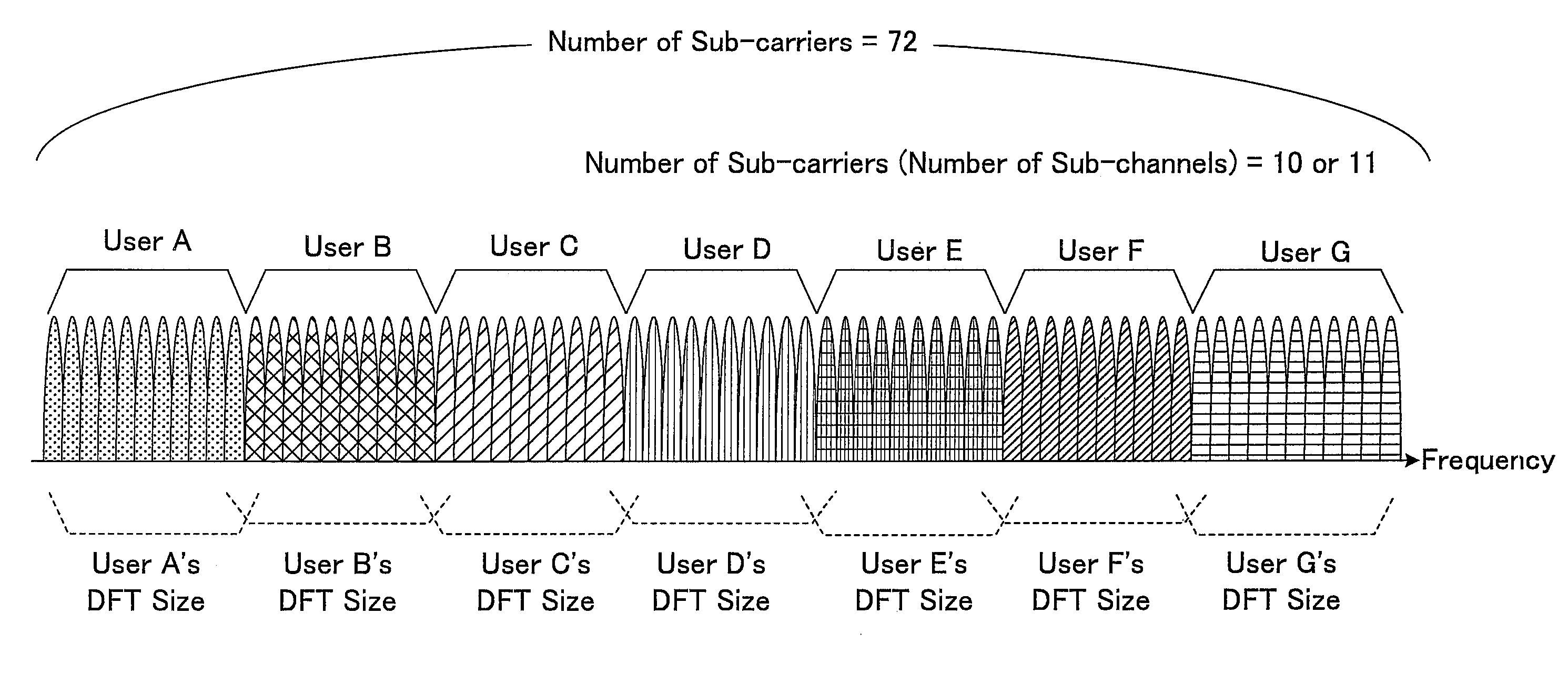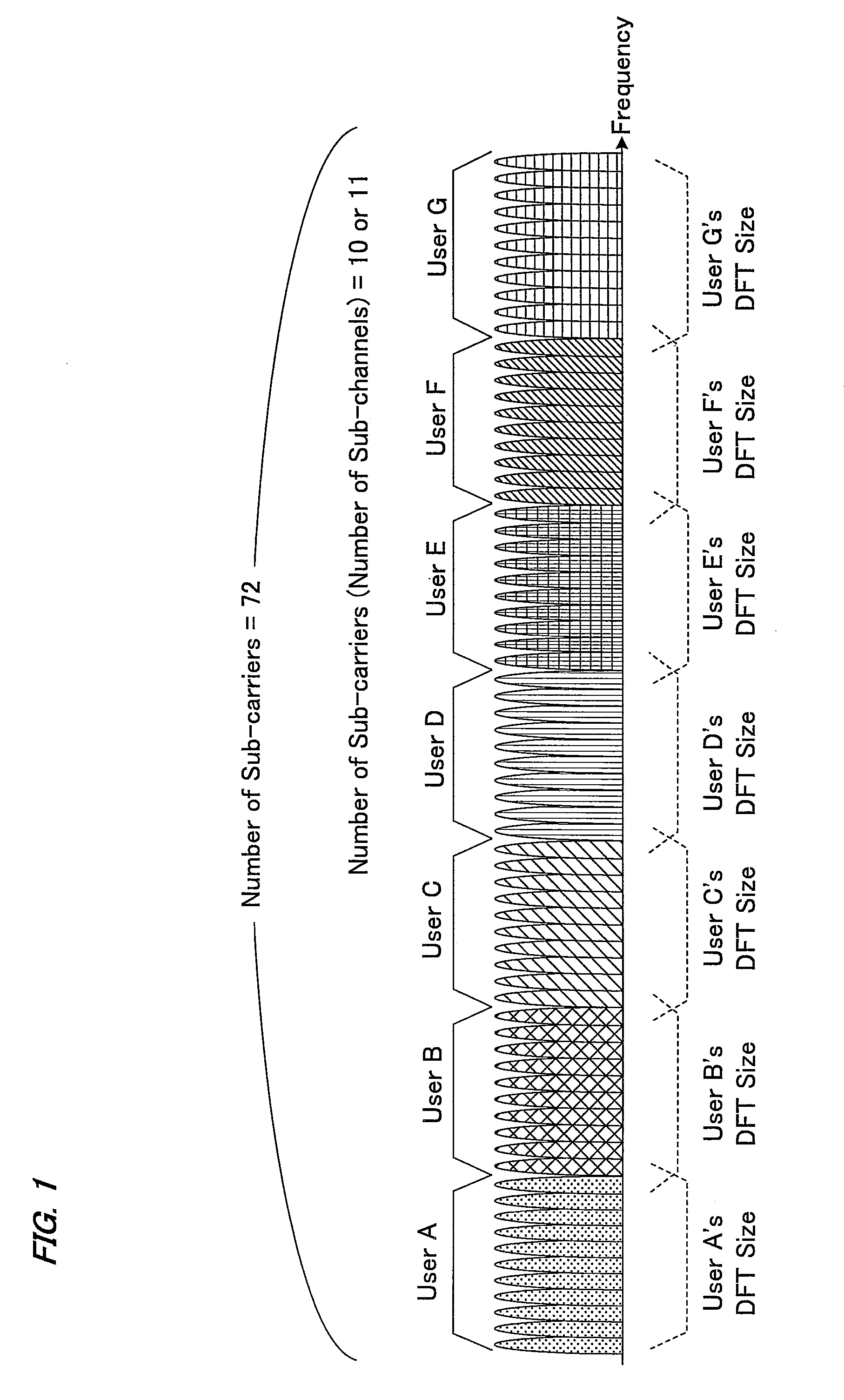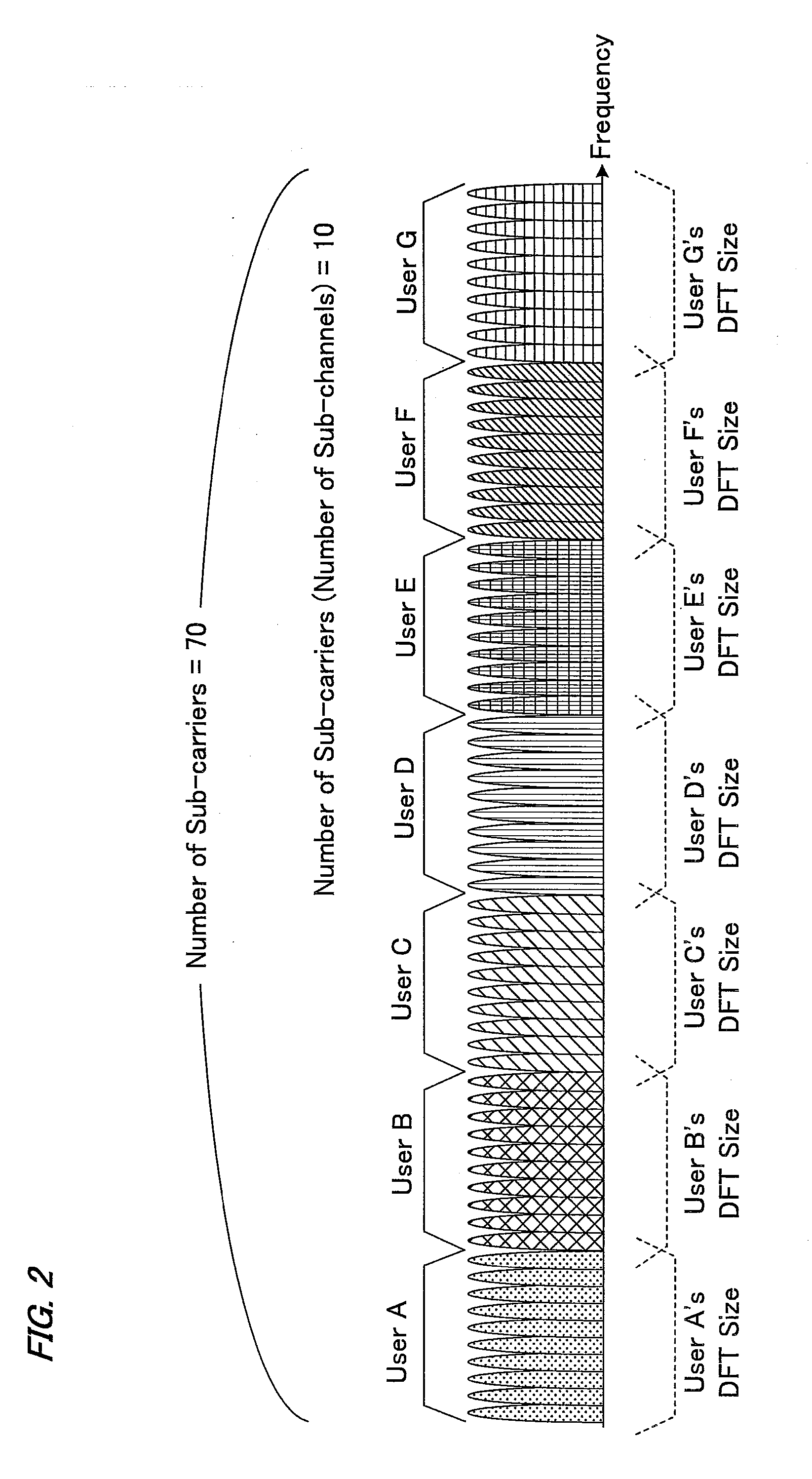Radio communication system and transmitting apparatus used for the same
- Summary
- Abstract
- Description
- Claims
- Application Information
AI Technical Summary
Benefits of technology
Problems solved by technology
Method used
Image
Examples
first embodiment
The First Embodiment
[0042]To begin with, in the present embodiment, a method of allocating sub-carriers in a SC-FDMA system where the number of sub-carriers that constitute one sub-channel is set to be lower than the number of signals output in parallel from the DFT unit of each terminal.
[0043]FIG. 1 shows an example where the present invention is applied to a localized allocation. This FIG. 1 shows an example in which the number of frequency signals (spectrums) that are performed a spread spectrum and output in parallel from the DFT unit of each terminal is 12 (that is, the DFT size is 12), whereas the number of sub-carriers that constitute one sub-channel (one frequency channel) is set at 10 or 11. In this case, the users (users A and G) allocated to the sub-channels (frequency channels) at both ends of the band will not perform transmission of the frequency signal at one end (one sub-carrier) of all the frequency signals output from the DFT unit, whereas the users (users B to F) ...
second embodiment
The Second Embodiment
[0054]This embodiment shows a configuration of a receiving apparatus (base station apparatus) that, when receiving a signal from which part of spectrums was clipped off, can reproduce the transmitted data without degrading performance too much by using non-liner iterative equalization having an excellent interference reducing function (e.g., frequency domain SC / MMSE (Soft Canceller followed by Minimum Mean Square Error) turbo equalization).
[0055]FIG. 5 shows a base station apparatus in the present embodiment. As shown in FIG. 5, the base station apparatus in the present embodiment includes a receiving antenna unit 200, a radio unit 201, an A / D converter 202, a synchronizer 203, a CP remover 204, a S / P converter 205, a DFT unit 206, a sub-carrier demapping unit 207, a zero inserter 208, a canceller 209, an equalizer 210, an IDFT unit 211, a demodulation and error correction decoder 212, an iteration controller 213, a decision unit 214, a channel estimator 215, a ...
third embodiment
The Third Embodiment
[0065]This embodiment shows an example where the number of frequency signals to be clipped varies every time-channel (frame). FIG. 6 shows a relationship between frames and sub-channels in the present embodiment. Here, though not illustrated in FIG. 6, each frame is formed of a plurality of symbols. As shown in FIG. 6, in the present embodiment, a different number of frequency signals are clipped for every frame so as to provide a different number of sub-channels (the maximum user capacity) in every frame. For example, the number of frequency signals to be clipped from each user allocated in frame 1 in FIG. 6 is two so that seven sub-channels can be provided. On the other hand, in frame 2, no clipping is performed for every user, the number of sub-channels is six. Further, the number of sub-channels in frame 3 is eight, and three frequency signals are clipped from each user allocated to this frame. In this way, the number of frequency signals to be clipped is set...
PUM
 Login to View More
Login to View More Abstract
Description
Claims
Application Information
 Login to View More
Login to View More - R&D
- Intellectual Property
- Life Sciences
- Materials
- Tech Scout
- Unparalleled Data Quality
- Higher Quality Content
- 60% Fewer Hallucinations
Browse by: Latest US Patents, China's latest patents, Technical Efficacy Thesaurus, Application Domain, Technology Topic, Popular Technical Reports.
© 2025 PatSnap. All rights reserved.Legal|Privacy policy|Modern Slavery Act Transparency Statement|Sitemap|About US| Contact US: help@patsnap.com



